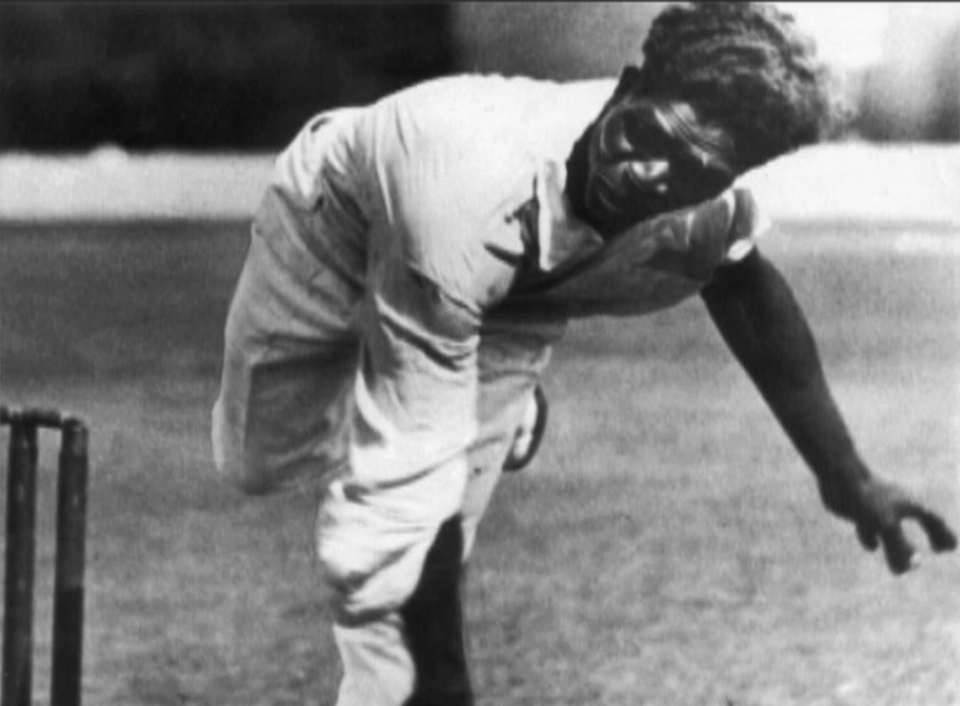Eddie Gilbert 1905 to 1978
Eddie Gilbert begins playing competitive cricket when he is fifteen when working in the Redgate area — a farming community twenty-five kilometres from the settlement. When he returns to Barambah he plays for the settlement side contributing to the teams success. In 1930, Gilbert is brought to Brisbane to demonstrate his abilities before officials of the Queensland Cricket Association. He is included in the state team and makes an impressive debut taking fifteen wickets in five matches in the 1930-31 season.
The one achievement for which Eddie Gilbert is remembered is bowling Don Bradman for a duck. No single ball bowled in the history of Australian cricket has had such socio-cultural ramifications. For Barambah residents, the incident is remembered, not only as a remarkable cricketing feat, but a demonstration that black could triumph over white. His feats become part of Barambah folklore.
He plays a total of twenty-seven matches between 1930 and 1936, taking eighty-seven wickets at an average of twenty-nine runs per wicket.
On November 13, 1936, the secretary of the Queensland Cricket Association, Mr RT Stephens, informs the Chief Protector of Aboriginals that Eddie Gilbert will not be chosen for any more Sheffield Shield matches. He asks the Chief Protector to return Gilbert to the Cherbourg Aboriginal Mission at once. Thus ends six years of outstanding achievement by one of Australia’s finest bowlers. Eddie Gilbert follows other great Aboriginal cricketers like Albert Henry and Jack Marsh who play at state level, into oblivion. While Gilbert is an inspiration, his career is also a reminder of the racism and intolerance they faced.

